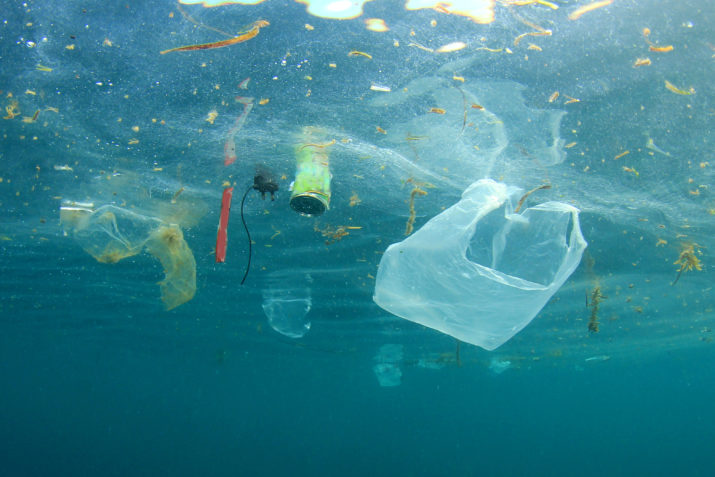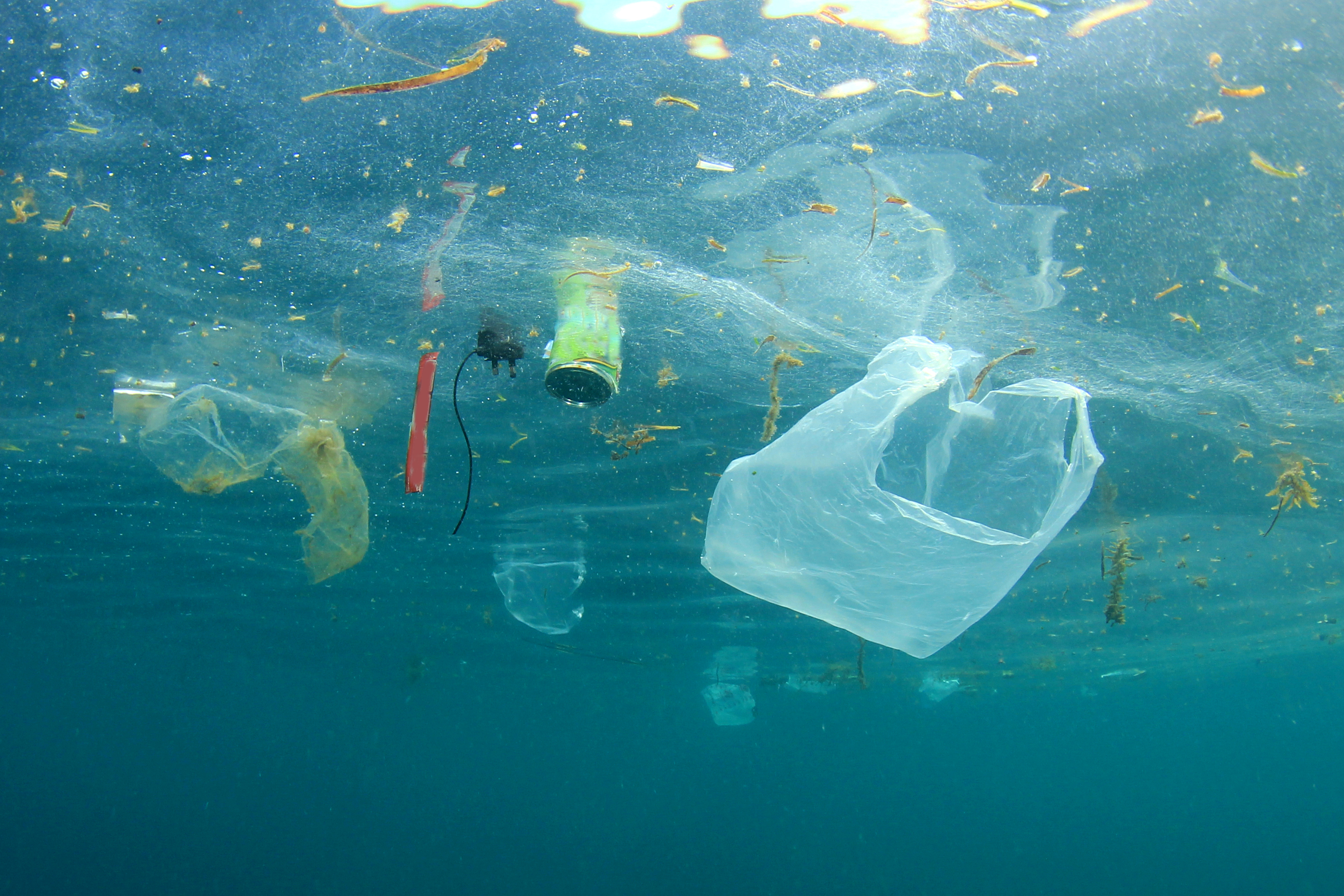
Water Quality Law in the US and EU: A Comparison of the Clean Water Act and Water Framework Directive

This is part of our special feature on Water in Europe and the World.
After decades of primarily state-led but incomplete work on water quality, in 1972, the United States’ federal government enacted the contemporary structure of the Federal Water Pollution Control Act—better known after the 1977 amendments as the Clean Water Act (CWA).[1] Twenty-eight years later, the European Union (EU) adopted “Directive 2000/60/EC of the European Parliament and of the Council establishing a framework for the Community action in the field of water policy,” better known as the EU Water Framework Directive (WFD),[2] which replaced earlier and more limited policies focused on protecting sources of drinking water.[3]
While both laws seek to improve water management and the health of waterbodies, they differ in three main ways. First, the EU WFD is far more comprehensive in its approach to water management than the Clean Water Act, which—out of respect to the United States’ system of federalism—leaves many aspects of water management entirely to the states. Second, relatedly, the two laws seek have different regulatory foci. Specifically, the WFD seeks to improve the overall status of waterbodies, while the CWA concentrates on reducing surface water pollution from specific kinds of sources. Finally, the CWA is much easier to enforce.
The EU Water Framework Directive Is More Comprehensive than the US Clean Water Act
“Water management” can refer to several types of governmental activities. These include allocation of surface water use and depletion rights, allocation of groundwater use and depletion rights, control of surface water pollution, control of groundwater pollution, preservation or restoration of aquatic habitat and ecosystems, and regulation of development near and in waterbodies, including the destruction of wetlands and mangrove forests. Nations can and often do divide these different aspects of water management among different agencies or different levels of government, resulting in a fragmentation of management authorities that can hamper the creation of comprehensive and holistic water policies with clearly defined priorities for a given water resource.[4]
The EU WFD seeks to avoid such regulatory fragmentation by addressing almost all of these aspects of water management. It emphasizes its holistic approach from the Preamble, stating that “[w]ater is not a commercial product like any other but, rather, a heritage which must be protected, defended and treated as such.”[5] The Directive addresses both water quality and water allocation,[6] seeking to comprehensibly and sustainably manage water resources.[7] Its concerns include both ecological quality[8] and the increasing general human pressure on water resources,[9] and it addresses both point and diffuse source water pollution.[10] Finally, the WFD clearly applies to groundwater, both in terms of groundwater use and in terms of groundwater’s potential impact on surface waters and their ecosystems.[11]
US law, in contrast, divides water allocation law (mostly state law) from water quality law (CWA implementation). Indeed, the CWA explicitly emphasizes twice—once at the beginning and once at the end—that it is not intended to interfere with state water allocations or state water rights.[12]
Similarly, the CWA’s application to groundwater contamination is much more tenuous than the WFD’s. The Act applies most directly to the “navigable waters,”[13] which it and the two federal agencies that implement the Act, the US Environmental Protection Agency (USEPA) and US Army Corps of Engineers (USACE), define only in terms of surface waters.[14] Activities that pollute groundwater generally do not trigger the Act,[15] although recent litigation has led to a split among the US Courts of Appeals regarding whether the CWA applies when facilities discharge pollutants to groundwater that is hydrologically connected to surface water.[16]
Interestingly, however, both laws give additional protections to coastal waters. The WFD’s Preamble notes the particular vulnerabilities of coastal waters and closed seas,[17] and while its ultimate aim for pollution in freshwaters “is to achieve the elimination of priority hazardous substances,” for marine waters it seeks to achieve “concentrations . . . near background values for naturally occurring substances.”[18] The CWA similarly both applies to ocean waters[19] and imposes special requirements—the ocean discharge criteria—on any entity that seeks to discharge pollutants into coastal waters.[20]
The EU Water Framework Directive and US Clean Water Act Have Different Regulatory Foci and Goals
Underscoring its holistic approach to water management, the EU WFD focuses on river basins, “so that measures in respect of surface water and groundwaters belonging to the same ecological, hydrological and hydrogeological system are coordinated.”[21] It defines a “river basin” to be “the area of land from which all surface run-off flows through a sequence of streams, rivers and, possibly, lakes into the sea at a single river mouth, estuary or delta.”[22] Member nations identify the individual river basins within their borders and create districts to manage them,[23] requiring such districts to establish river basin plans[24] and programs of measures[25] that ensure that each river basin achieves the WFD’s goals.[26]
In contrast, the US CWA focuses on cleaning up discharges of pollutants to surface waters from point sources—that is, “any discernible, confined, and discrete conveyance” of pollutants, like a pipe or a ditch.[27] While the Act proclaims the lofty objective “to restore and maintain the chemical, physical, and biological integrity of the Nation’s waters,”[28] its primary prohibition forbids “the discharge of any pollutant by any person” except as in compliance with the Act,[29] which generally involves getting a permit.[30] At the end of the Act’s somewhat convoluted definitions of “discharge of a pollutant”[31] and subsidiary terms, and subject to exceptions contained therein, the CWA applies to any entity[32] that adds pretty much anything[33] to “waters of the United States”[34]—generally surface waters, as noted above— or the ocean[35] from an identifiable and human-controlled conveyance (the point source).
Following from their differences in regulatory focus, the EU WFD and US CWA also seek to achieve different goals. For most point source polluters, the CWA seeks to ensure compliance with technology-based effluent limitations[36]—that is, “restriction[s] . . . on quantities, rates, and concentrations of chemical, physical, biological, or other constituents which are discharged from point sources . . . .”[37] The USEPA establishes national effluent limitations for different industrial point source categories, such as sewage treatment plants, coal-fired power plants, fish processing facilities, and so forth, and the Act mandates that effluent limitations become more stringent over time.[38] In addition, effluent limitations are more stringent for certain kinds of pollutants: No point source can discharge “any radiological, chemical, or biological warfare agent, any high-level radioactive waste, or any medical waste,”[39] while effluent limitations for toxic pollutants must be based on “the best available technology economically achievable,” including the possibility of a complete discharge prohibition.[40]
The EU WFD, in turn, seeks to achieve “good water status” in all European river basins within 15 years.[41] “‘Good surface water status’ means the status achieved by a surface water body when both its ecological status and its chemical status are at least ‘good.’”[42] In turn, “‘[g]ood groundwater status’ means the status achieved by a groundwater body when both its quantitative status and its chemical status are at least ‘good.’”[43] “Ecological status” categorizes surface waters in terms of the structure and function of their aquatic ecosystems.[44] Good chemical status means that a surface water body or a groundwater body meets all of the applicable chemical concentration requirements.[45] Finally, groundwater’s quantitative status assesses how badly withdrawals have depleted the aquifer.[46]
Thus, the EU WFD focuses on overall water body health, while the CWA focuses on reducing the impacts from individual point source polluters. Nevertheless, it is important to note that the CWA does address ambient water quality through its water quality standards provisions.[47] Under these provisions, the states decide what uses they want the surface water bodies within their borders to achieve, then establish the water quality criteria that will allow the water body to support those uses.[48] As a result, unlike under the WFD, the CWA contains no overarching definition of what counts as “good” water quality. Nevertheless, as is true in the WFD,[49] a federal “antidegradation policy” ensures that waters do not deteriorate.[50]
The United States’ Clean Water Act Is Easier to Enforce than the EU Water Framework Directive
The US CWA contains a number of exemptions—often for agriculture, forestry, and energy development—that limit its applicability.[51] Nevertheless, once a source is subject to the Act’s requirements, a number of different entities can pursue enforcement through a variety of means. For example, both the USEPA and states with delegated authority can pursue administrative, civil, and criminal enforcement actions against entities who pollute without a permit, violate the terms of the permit, or lie during the permitting or enforcement process.[52] The enforcement action’s severity and the penalties incurred are keyed both to the violator’s mens rea and to the amount of harm caused or risked.[53] In addition, permittees must monitor their own discharges in accordance with the USEPA’s rules and submit Daily Monitoring Reports to the USEPA and the relevant state agency,[54] making it easy for these agencies to compare permit requirements to actual discharges and find violators.
The USEPA also retains considerable authority over the USACE and states that implement the Act. For example, it can veto individual permits that either the USACE[55] or the states[56] issue, and it both approves and can withdraw state authority to issue permits.[57] In addition, the USEPA must issue water quality standards for states that refuse to do so,[58] ensuring that general water quality goals exist for all waters.
Beyond government enforcement, and like most federal environmental statutes in the United States, the CWA allows citizen suits—that is, civil lawsuits in federal court by “any citizen” to enforce the Act’s provisions.[59] So long as the person or entity bringing suit has standing to sue[60] and follows the additional procedures required,[61] it can sue the federal government, state officials, or private entities who are violating the Act.[62] If successful, the plaintiff can then recover its litigation costs, including attorney and expert witness fees.[63] In the United States, each side in litigation generally bears its own expenses, so this fee-shifting provision encourages citizen enforcement. Moreover, both permits and Daily Monitoring Reports are public documents,[64] so citizen plaintiffs can easily find polluters who are violating their permits.
Finally, citizen suits can also keep the USEPA and USACE accountable. First, the CWA’s citizen suit provision allows civil lawsuits against the USEPA for violations of any of its mandatory duties under the Act.[65] Second, under the general federal Administrative Procedure Act, citizens can sue any federal agency for decisions that are unreasonable, unconstitutional, or fail to follow required procedures.[66]
Like the CWA, the EU WFD acknowledges the importance of enforcement and requires member states to monitor river basins.[67] However, it delegates most enforcement law to member countries.[68] There are exceptions: Member states must report to the European Commission,[69] the EU Parliament and the Commission guide water pollution abatement,[70] and individual citizens can use general EU law to “ensure that states draw up plans with measures capable of achieving the objectives, taking into account the factual circumstances and the various opposing interests.”[71] Nevertheless, actual enforcement of specific river basin objectives depends primarily on what individual member states allow,[72] and each individual member nation determines the penalties applicable to breaches of its own implementation of the Directive.[73]
In addition, the WFD acknowledges that many water bodies in Europe have already been heavily developed in ways that make it difficult to return them to “good” status, altering or extending a nation’s obligations to comply with the WFD’s good status requirements.[74] Member nations may also phase in requirements to spread out costs,[75] can use new physical alternations as reasons for not meeting WFD deadlines for “good” status,[76] and can even allow the deterioration of high status waters in pursuit of sustainable development.[77] These concessions to reality complicate enforcement by potentially obscuring the actual requirements that apply to any given river basin and/or delaying the time of compliance, and, “from a legal perspective, a member state will not have breached its obligation so long as it implements the processes required by the WFD.”[78]
Conclusion
The EU WFD and US CWA differ not only in their comprehensiveness and enforceability, but also in their perceived success to date. While the CWA leaves many areas of water management untouched, and hence water quality challenges certainly remain in the United States,[79] the Act has dramatically reduced point source pollution and is generally regarded as a success.[80] In contrast, there is widespread agreement that the WFD has not yet achieved its highly ambitious goals,[81] at least in part because of its lack of enforceability.[82] Of course, the CWA also has had almost three decades longer to operate than the WFD, and thus it remains to be seen whether the WFD will eventually dramatically improve river basins throughout Europe.
Robin Kundis Craig is the James I. Farr Presidential Endowed Professor of Law at the University of Utah S.J. Quinney College of Law. This research was made possible, in part, through generous support from the Albert and Elaine Borchard Fund for Faculty Excellence.
References:
[1] Robin Kundis Craig, The Clean Water Act and the Constitution 10-37 (2d ed. 2009).
[2] European Commission, Environment: The EU Water Framework Directive—integrated river basin management for Europe, http://ec.europa.eu/environment/water/water-framework/index_en.html (as updated 08 June 2016 and viewed 15 Oct. 2018).
[3] European Commission, Introduction to the new EU Water Framework Directive, http://ec.europa.eu/environment/water/water-framework/info/intro_en.htm (as updated 08 June 2016 and viewed 24 Oct. 2018).
[4] E.g., Robin Kundis Craig, Climate Change, Regulatory Fragmentation, and Water Triage, 79 U. Colo. L. Rev. 825, 833-69 (2008); Alejandro E. Camacho, Climate Change and Regulatory Fragmentation in the Great Lakes Basin, 17 Mich. St. J. Int’l L. 139, 146-52 (2008).
[5] Directive 2000/60/EC of the European Parliament and of the Council establishing a framework for the Community action in the field of water policy, at Preamble ¶ 1, (23 Oct. 2000) [hereinafter EU Water Framework Directive].
[6] Id. at Preamble ¶¶ 4, 23, 34, & art. 1(a), (c), (d), (e), art. 4(1)(a)(iv), (b)(iii), art. 7, art. 9.
[7] Id. at Preamble ¶¶ 3, 5, 16, & art. 1(b).
[8] Id. at Preamble ¶¶ 2, 11, 19, & art. 1(a).
[9] Id. at Preamble ¶ 4, & art. 1(a), (e).
[10] Id. art. 10.
[11] Id. at Preamble ¶¶ 20, 26, 28, 34, & art. 1(d), (e), art. 4(1)(b).
[12] 33 U.S.C. §§ 1251(b), (g), 1370(2).
[13] Id. §§ 1251(a), 1362(12), 1342(a), 1344(b).
[14] Id. § 1362(6); 33 U.S.C. § 328.3(a); 40 C.F.R. § 122.2.
[15] Village of Oconomowoc Lake v. Dayton Hudson Corp., 24 F.3d 962, 964-66 (7th Cir. 1994); Umatilla Waterquality Protective Ass’n, Inc. v. Smith Frozen Foods, Inc., 962 F. Supp. 1312, 1314-20 (D. Or. 1997).
[16] Compare Kentucky Waterways Alliance v. Kentucky Utilities Co., — F.3d —-, 2018 WL 4559315, at *7-*10 (6th Cir. Sept. 24, 2018), and Tennessee Clean Water Network v. Tennessee Valley Auth., — F.3d —-, 2018 WL 4559103, at *6-*7 (6th Cir. Sept. 24, 2018) (both holding that the fact that a coal-fired power plant’s coal ash polluted a lake via groundwater did not subject the power plant to Clean Water Act regulation), with Hawai’i Wildlife Fund v. County of Maui, 886 F.3d 737, 745-47 (9th Cir. 2018) (holding that the CWA does regulate discharges of pollutants into injection wells when the pollution quickly reaches surface waters), and Upstate Forever v. Kinder Morgan Energy Partners, L.P., 887 F.3d 637, 651-52 (4th Cir. 2018) (holding that the CWA can apply to discharges into groundwater that is hydrologically connected to surface water).
[17] EU Water Framework Directive, supra note 4, at Preamble ¶ 17.
[18] Id. at ¶ 27.
[19] 33 U.S.C. § 1362(7)-(10), (12).
[20] Id. § 1343.
[21] EU Water Framework Directive, supra note 4, at Preamble ¶ 33; see also ¶¶ 35, 36.
[22] Id. art. 2(13).
[23] Id. art. 3.
[24] Id. art 13.
[25] Id. art 11.
[26] Id. art 5.
[27] 33 U.S.C. § 1362(14).
[28] Id. § 1251(a).
[29] Id. § 1311(a).
[30] Id. §§ 1342, 1344.
[31] Id. § 1362(12).
[32] See id. § 1362(5) (broadly defining “person”).
[33] See id. § 1362(6) (broadly defining “pollutant”).
[34] Id. § 1362(7)
[35] Id. § 1362(8)-(10).
[36] Id. § 1311(b), (e).
[37] Id. § 1362(11).
[38] Id. § 1311(b).
[39] Id. § 1311(f).
[40] Id. § 1317(a)(2).
[41] EU Water Framework Directive, supra note 4, art. 4(1)(a)(ii), (b)(ii).
[42] Id. art. 2(18).
[43] Id. art. 2(20).
[44] Id. art 2(21)-(23), Annex V.
[45] Id. arts. 2(24), (25), 4(1)(a), 16(7), Annex V tbl. 2.3.2, Annex IX.
[46] Id. art. 2(26), Annex V tbl. 2.1.2.
[47] 33 U.S.C. § 1313.
[48] Id. § 1313(c).
[49] EU Water Framework Directive, supra note 1, art 4(1)(a), (b).
[50] 40 C.F.R. § 131.12(a).
[51] E.g., 33 U.S.C. §§ 1342(l), 1344(f), 1362(6), 1362(14).
[52] Id. § 1319.
[53] Id.
[54] Id. § 1318.
[55] Id. § 1344(c).
[56] Id. § 1342(d).
[57] Id. § 1342(b), (c).
[58] Id. § 1313(c)(4).
[59] Id. § 1365(a).
[60] Id. § 1365(g).
[61] Id. § 1365(b).
[62] Id. § 1365(a)(1).
[63] Id. § 1365(d).
[64] Id. § 1318(b), 1342(j), 1344(o).
[65] Id. § 1365(a)(2).
[66] 5 U.S.C. § 706.
[67] EU Water Framework Directive, supra note 4, art. 8.
[68] Id. at Preamble ¶ 53.
[69] Id. art. 15.
[70] Id. arts. 16, 17.
[71] Olivia Odom Green, Ahjond S. Garmestani, Helena F. M. W. Van Rijswick, & Andrea M. Keessen, EU water governance: striking the right balance between regulatory flexibility and enforcement?, 18(2) Ecology and Society 10, at 4 (2013). http://dx.doi.org/10.5751/ES-05357-180210.
[72] EU Water Framework Directive, supra note 4, art. 24.
[73] Id. art. 23.
[74] Id. art. 4(3), 4(5).
[75] Id. at Preamble ¶ 29, art. 9.
[76] Id. art. 4(7).
[77] Id.
[78] Sarah Thomas, The Water Framework Directive: To Succeed or Not to Succeed?, 26:5 Water & Wastewater Int’l (Sept. 1, 2011), https://www.waterworld.com/articles/wwi/print/volume-26/issue-5/regulars/legal-perspective/the-water-framework-directive-to-succeed-or-not-to-succeed.html.
[79] E.g., Paul Greenberg, The Clean Water Act at 40: There’s Still Much Left to Do, YaleEnvironment360 (May 21, 2012), https://e360.yale.edu/features/the_clean_water_act_at_40_theres_still_much_left_to_do.
[80] James Salzman, Why Rivers No Longer Burn: The Clean Water Act Is One of the Greatest Successes in Environmental Law, Slate.com (Dec. 10, 2012), https://slate.com/technology/2012/12/clean-water-act-40th-anniversary-the-greatest-success-in-environmental-law-made-rivers-stop-burning.html; Jeff Inglis, Tom Van Heeke, Gideon Weissman, Lindsey Hallock, & John Rumpler, Environment America Research & Policy Center, Waterways Restored: The Clean Water Act’s Impact on 15 American Rivers, Lakes and Bays (Oct. 2014), available at https://environmentamerica.org/sites/environment/files/EA_waterways_scrn.pdf.
[81] E.g., Nikolaos Voulvoulis, Karl Dominic Arpon, &, Theodoros Giakoumis, The EU Water Framework Directive: From great expectations to problems with implementation, 575 Sci. Total Env’t 358, 358-66 (2017).
[82] E.g., Green et al., supra note 71, at 6-7.
Photo: Water is poured | Shutterstock
Published on December 11, 2018.




